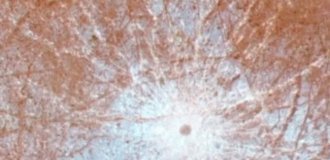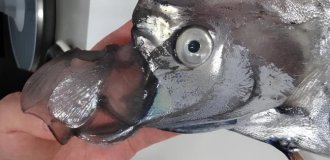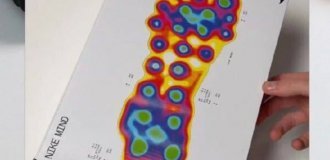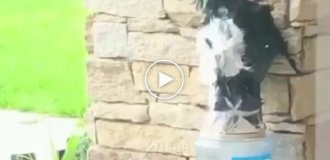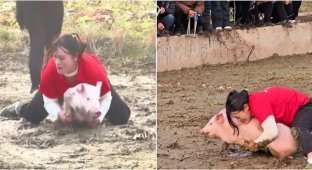The mystery of the "devil's corkscrews" (4 photos)
In 1892, paleontologist Erwin Barbour, who studied the Miocene sandstones of the Garrison Formation in northwestern Nebraska, stumbled upon something amazing and amazing. The locals turned his attention to the strange form of exposure, somewhat reminiscent of semi-erased vertical "columns" or "icicles". 
One of the objects discovered by the Barbour expedition
The experienced eye of the scientist immediately discerned the fossil, folded from a denser rock - moreover, a fossil that is completely different from what is known to science. Carefully and carefully, literally a centimeter behind centimeter, Barbour removed the layers of sandstone surrounding the mysterious object - until, finally, the fossil appeared before the expedition members "In his best". And there was something to admire - imagine a "corkscrew" or a graceful "spiral" as thick as an arm and almost three and a half meters! 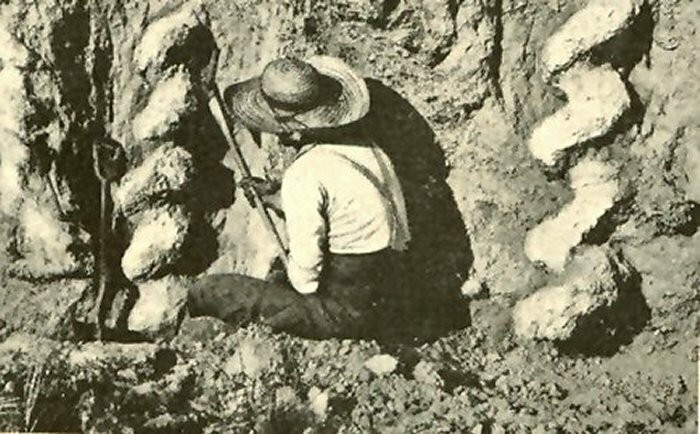
Cleaning up found objects
The amazing find was called "daimonelix", that is, translated from Greek, "devil's corkscrew". Over the next few months Barbour discovered more than twenty similar objects - equally long and graceful spirals, twisted both to the right and to the left. Scientist first suggested that the discovered object is the remains of a giant freshwater sponges. However, while examining the spiral itself, Barbour discovered the remains of plant origin - and then decided that he was dealing with an extinct plant unknown to science. It is this version that the scientist outlined in his report.
However, two of the largest American vertebrate specialist - Eduard Cope and Theodor Fuchs. most attentive after examining the mysterious "corkscrews", they came to the conclusion that this not a plant, but ... a hole - a "house" of a Miocene rodent, similar gopher! A long time ago, this hole was covered with earth, and for millions of years the earth was compressed into a solid stone, making an amazingly accurate "cast" animal mink.
Erwin Barbour was not going to give up. "Rocks of the Garrison Formation in Nebraska,” he wrote in a response article, “represent the bottom ancient lake. It turns out that the Miocene ground squirrel of Professor Fuchs arranged for himself a cozy mink lined with dry hay under water at a depth several hundred meters."
Another American paleontologist, Olaf, intervened in the dispute. Peterson. He also came to Nebraska for excavations - to get some "devil's corkscrews" for the Carnegie Museum in Pittsburgh. Inside spirals, he discovered the bones of an animal - namely, an ancient beaver paleocastor. Thus, the theory of the “rodent mink” received a new the confirmation. 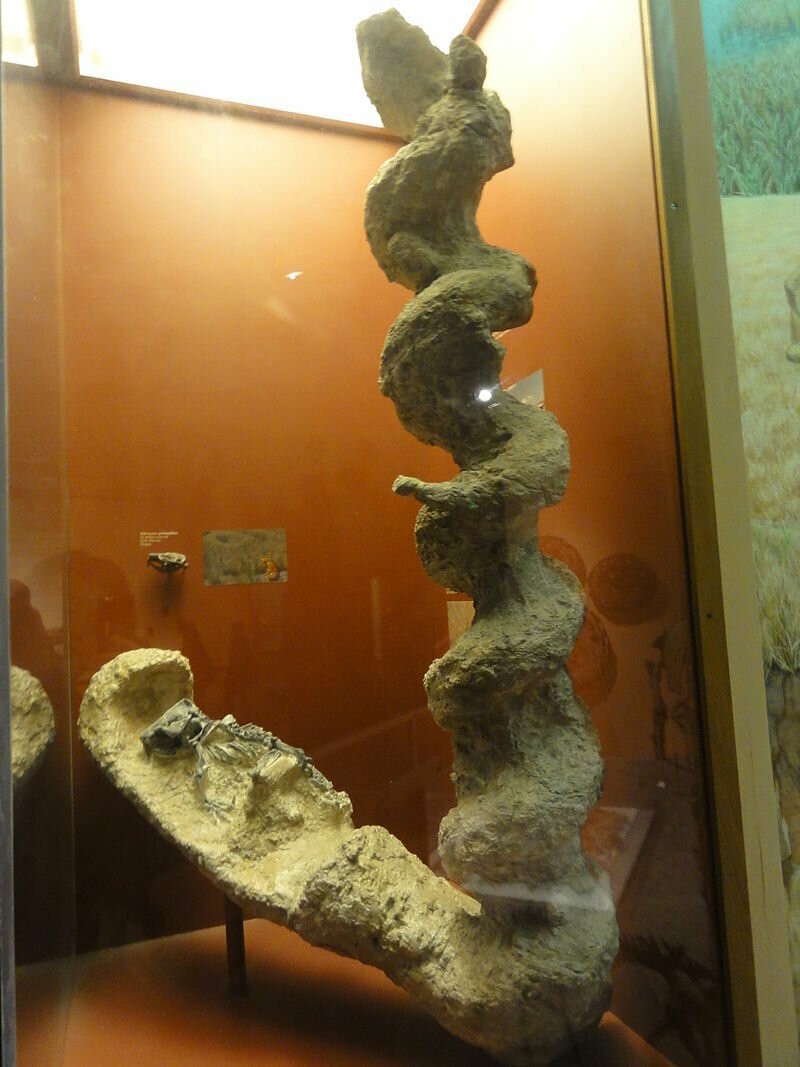
"Devil's corkscrew" with the remains of paleocastor
But even here Barbour was adamant. "Please tell me what an ingenious beaver or gopher is able to dig minks in the form of a perfect spirals? he mocked his opponents. – Stride consistency spiral, wound with mathematical precision on an immaculately straight line - where have you seen such impeccably symmetrical gopher minks? Daimonelix is an ancient plant, definitely and unambiguously!”.
This scientific dispute remained unresolved for many decades. Finally, in 1977, Larry Martin, an expert on extinct mammals, managed to give a definitive answer. First of all, he drew attention to that the deposits of the Harrison Formation are not at all the remains of an ancient lakes. More recent research by geologists has shown that these fine-grained sandstones were formed not under water, but in air - in arid steppe zone. After a thorough excavation, Martin discovered not only "devil's corkscrews" preserved in sandstone, but also plant roots, and even mink insects. The "devil's corkscrews" themselves at the very bottom, as it turned out, did not break off, but turned into a straight, going at an angle upwards, "sleeve". 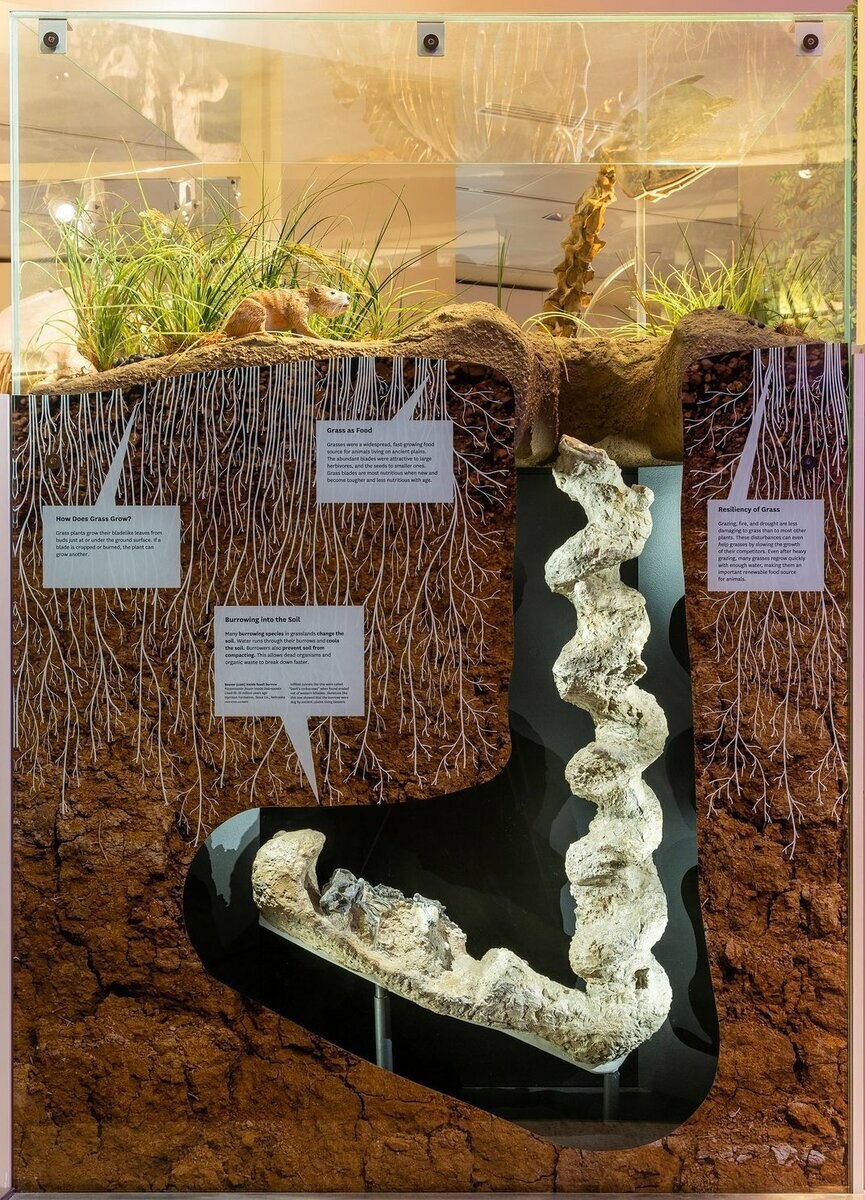
Reconstruction of a paleocastor mink
But most importantly - Martin and his student Deb Bennett carefully compared the teeth of the paleocastor beaver with thin marks on the surface of the "devil's corkscrews" and showed that they are perfect for each other. Thus, the Miocene beaver dug his mink mostly teeth!
However, where did plant remains come from in the rodent burrows? Scientists have built a mathematical model of the paleocastor spiral mink - it turns out that in a hot dry climate, numerous turns spirals made it possible to better retain moisture, so the walls of the tunnelinevitably had to be overgrown with plants! Most likely to ancient beavers from time to time I even had to “weed” my minks so that they have not completely grown.

